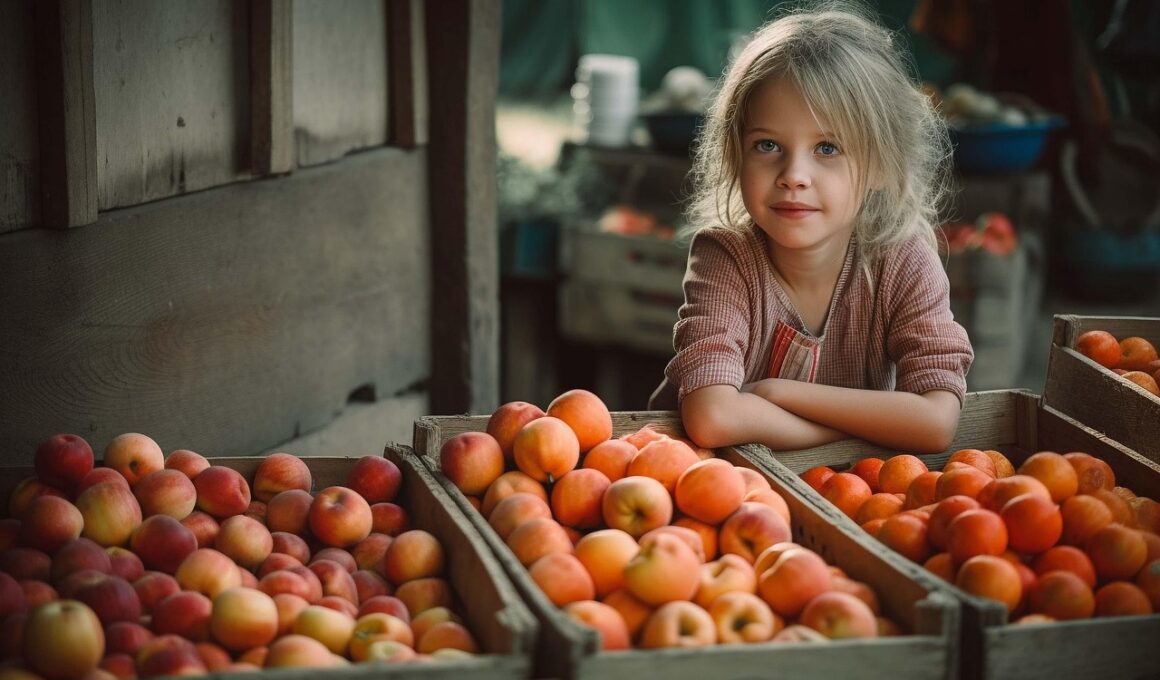How to Shop Smart at Farmer’s Markets for Better Prices
Shopping at farmer’s markets can be an enjoyable and rewarding experience. However, it requires some strategic thinking to make the most out of your purchases. Firstly, always plan your visit around the market schedule. This ensures you have access to the freshest produce and local goods. Secondly, arrive early in the day to beat the crowds. This gives you the first pick of the best buys before items are sold out. Furthermore, bring cash instead of using credit or debit cards; many vendors prefer cash payments, allowing for better negotiation. It’s also helpful to familiarize yourself with the vendors and their offerings. By doing some preliminary research, you can identify which stalls have the best prices for the products you need, thus saving money. Don’t forget to ask vendors for their deal options like “buy one, get one free” offers. Lastly, consider visiting closer to the market’s closing time. Vendors may offer discounts on leftover goods to reduce waste, helping you save significantly while benefiting from fresh local products.
Another important strategy is to bring reusable bags and containers. Not only is this environmentally friendly, but it also helps you carry your goods easily as you explore the market. When selecting fresh produce, always inspect the quality closely. Look for vibrant colors, firm textures, and a lack of bruising or blemishing. Sometimes, smaller or imperfectly shaped fruits and vegetables can be even better but cost less. Additionally, don’t hesitate to sample products. Many vendors encourage tasting, allowing you to find the best quality items before purchasing. Engage with the farmers and ask questions about their farming practices, ensuring you’re supporting ethical and sustainable agriculture. Foster a dialogue where you express interest in discounts for bulk purchases. If you’re buying a large quantity, mention it upfront; vendors often reward loyal customers. Furthermore, keep an open mind about seasonal produce options. In-season fruits and vegetables tend to be more affordable and tastier, making them excellent choices. Finally, learn to negotiate respectfully without haggling aggressively; you might be surprised at the willingness of sellers to find a middle ground.
Check for Seasonal Deals
Farmers’ markets usually have seasonal products that you can take advantage of for better prices. Each season brings a unique array of fruits and vegetables, so it’s important to stay informed about what’s currently available. Purchase items that are in peak season; they not only taste better but also cost less due to higher supply levels. As summer approaches, look for tomatoes, zucchini, and corn to be cheaper and fresher. Similarly, in autumn, apples and pumpkins are likely to be in abundance while being great choices for baking and cooking. During winter months, root vegetables like potatoes and carrots typically remain low priced and nutritious. You can even ask vendors about upcoming seasonal crops, which can provide insights into future shopping trips. Furthermore, consider joining a community supported agriculture (CSA) program. This model generally allows you to receive a weekly or monthly share of seasonal produce at a discounted rate. Joining forces with friends or family can even present opportunities for bulk purchases, further enhancing savings. By strategically leveraging seasonal deals, you’ll enhance your grocery shopping efficiency, maximizing both flavors and savings.
Utilizing social media and local apps can significantly improve your farmer’s market shopping experience. Follow the local vendors on platforms like Instagram or Facebook. They often post updates on special deals, product availability, and what’s freshest in their stalls. Additionally, many markets have their own dedicated pages sharing weekly schedules and vendor lists. This makes it easier to plan your visit effectively, knowing which products to prioritize. Signing up for newsletters from local farms allows you to receive direct communications about upcoming sales or exclusive offers, ensuring you’re in the loop. On top of that, check various apps designed to connect buyers with local farmers. These platforms can feature maps, reviews, and even pricing comparisons for different markets in your area, helping optimize your shopping decisions. Moreover, utilizing marketplace platforms can enable you to pre-order produce to save time and guarantee availability. With technology now available at our fingertips, maximizing savings at farmers’ markets has never been easier. By incorporating these digital strategies, you’re already one step closer to becoming a savvy shopper, supporting local agriculture while enjoying great deals.
Build Relationships with Vendors
Building lasting relationships with local vendors is instrumental in enhancing your shopping experience at farmer’s markets. Frequent visits allow you to establish rapport, leading to potential discounts and insider knowledge on seasonal goods. Vendors recognize loyal customers and may offer them exclusive deals or first dibs on new stock. Share your interest in specific products or specialties; often, they would appreciate knowing what their customers desire. Over time, fostering these connections will empower you to navigate through their offerings with more confidence. While conversing with the farmers, you can inquire about their production methods, learning how to make informed and sustainable choices when shopping. They may even provide tips about optimal storage and recipe suggestions for their products. Participating in community events or workshops they host can deepen these ties while unveiling additional savings opportunities. Additionally, if you’re interested in a specific product, don’t hesitate to ask if they’re able to reserve it for your next visit. This personalized approach to shopping creates a community atmosphere that benefits both parties. Ultimately, these relationships ensure you are well-informed about the freshest produce and special sales.
Combining purchases with other local goods can provide enhanced savings while supporting small businesses. Many farmers’ markets feature local artisans, bakers, and crafters offering unique items alongside fresh produce. By buying both food and handmade products, you are enhancing your grocery list and potentially saving on transport costs by shopping for everything in one location. Consider forming a group with friends or family to collectively purchase bulk items, which may entice vendors to offer discounts for larger orders. Additionally, exploring value-added products such as jams, sauces, or dried fruits can provide cheaper alternatives to brand-name products found in supermarkets. These products are often crafted with care, using high-quality local ingredients, giving you great value for your money. It may also encourage other vendors to introduce combo deals or bundles for their goods. Moreover, remember to share all about the shopping experience on social media platforms afterward. Not only does this support the local market’s visibility, but it can also lead to engaging promotions. By merging your purchases strategically, you create opportunities for better prices while supporting the local economy.
Final Thoughts on Smart Grocery Shopping
In conclusion, practicing smart grocery shopping at farmer’s markets can lead to significant savings. It requires a combination of careful planning, relationship-building, and staying informed about seasonal produce. Don’t hesitate to experiment with different habits and discover what works best for you, as every market experience is unique. Understanding vendor dynamics and creating personal ties is vital. Researching local options as well as leveraging technology is an important strategy. Always approach vendors with respect, keeping in mind that they offer quality local products born from their labor of love. By fostering mutual respect and a sense of community, you greatly enhance not just your shopping experience but also local agriculture. With these tips in mind, you’ll find yourself spending less and enjoying fresh, high-quality food sourced from your area. Make it a family activity, encouraging everyone to participate in the selection process. Sustainable grocery shopping is not just about nutrition; it’s also about building relationships within your community. Happy shopping, and remember: smart choices lead to bountiful benefits for you and the local economy.


